Diagnostic Services
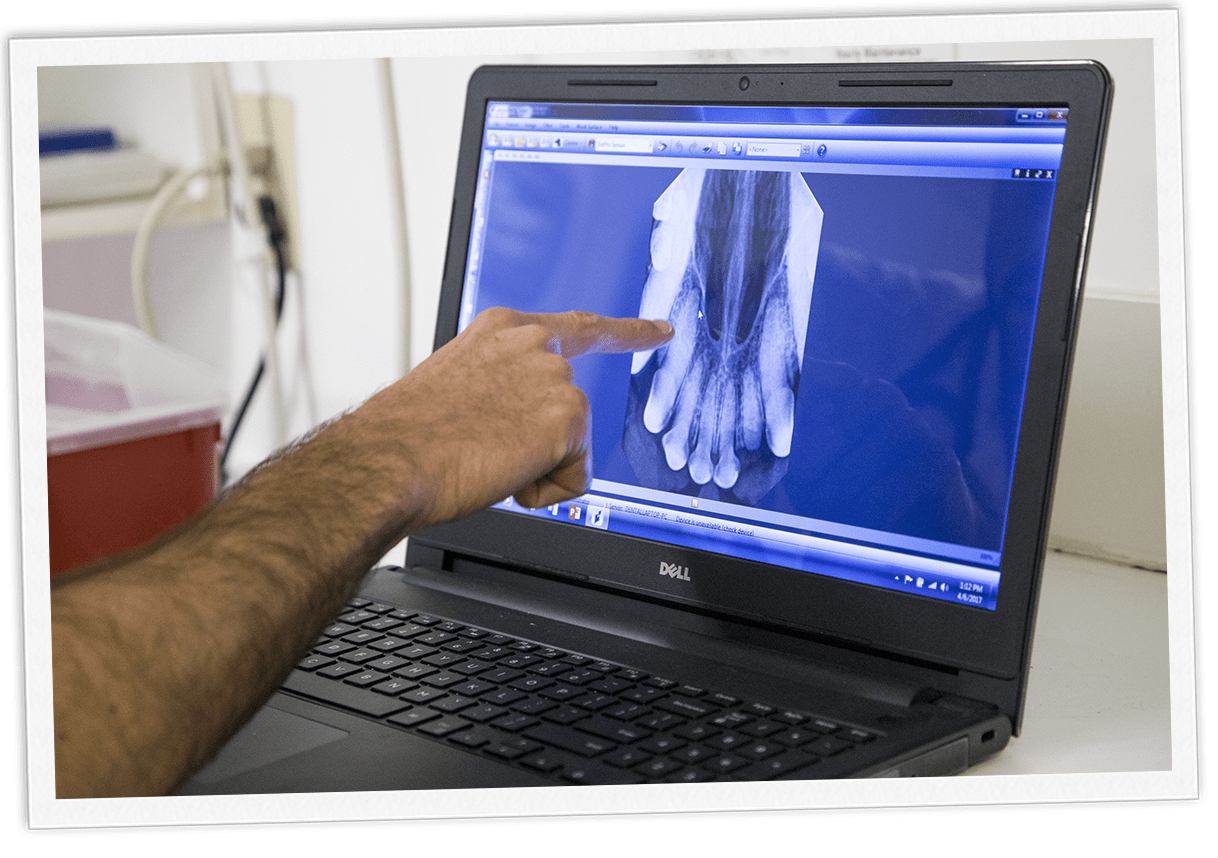 Digital Radiology
Digital Radiology
Radiographs are one of the most important diagnostic tools in veterinary medicine. They allow us to view the shape, size and location of organs inside your pet's body. Radiographs are extremely helpful for diagnosing and monitoring many medical and surgical conditions. X-rays are useful for examining your pet's bones, lungs, heart, abdomen, oral cavity and other areas of the body. An x-ray can detect bladder stones, a fractured bone, tumor, heart problem, and locate an obstruction or foreign body in your pet's stomach or intestine. X-rays and Ultrasound are often utilized together for an even more accurate diagnosis.
Sky Lake Animal Hospital has a new, state-of-the-art, digital x-ray machine. Compared to x-rays produced by a traditional machine, the quality of digital radiographs is much better. Because digital radiographs are so much better than traditional x-rays, fewer images are needed in order to make an accurate diagnosis. Digital x-rays are produced quickly and immediately displayed on a computer monitor. They can be manipulated to get a better view of your pet's bones and internal organs. Our sophisticated digital x-ray equipment produces clear, detailed images that allow our veterinarians to make a more rapid and accurate diagnosis.
Digital radiology has many benefits for your pet, you, our staff and the environment. Because digital x-ray images can be saved on a computer, they can be transmitted quickly by email to a specialist if a referral or second opinion were necessary. The images can also be saved to a disc and given to you. Digital x-rays are easier and faster to process than traditional film x-rays, resulting in less time on the x-ray table (and less stress) for your pet. The harsh chemicals once necessary for developing x-rays are not needed for digital x-rays, reducing potential harm to our staff and the environment.
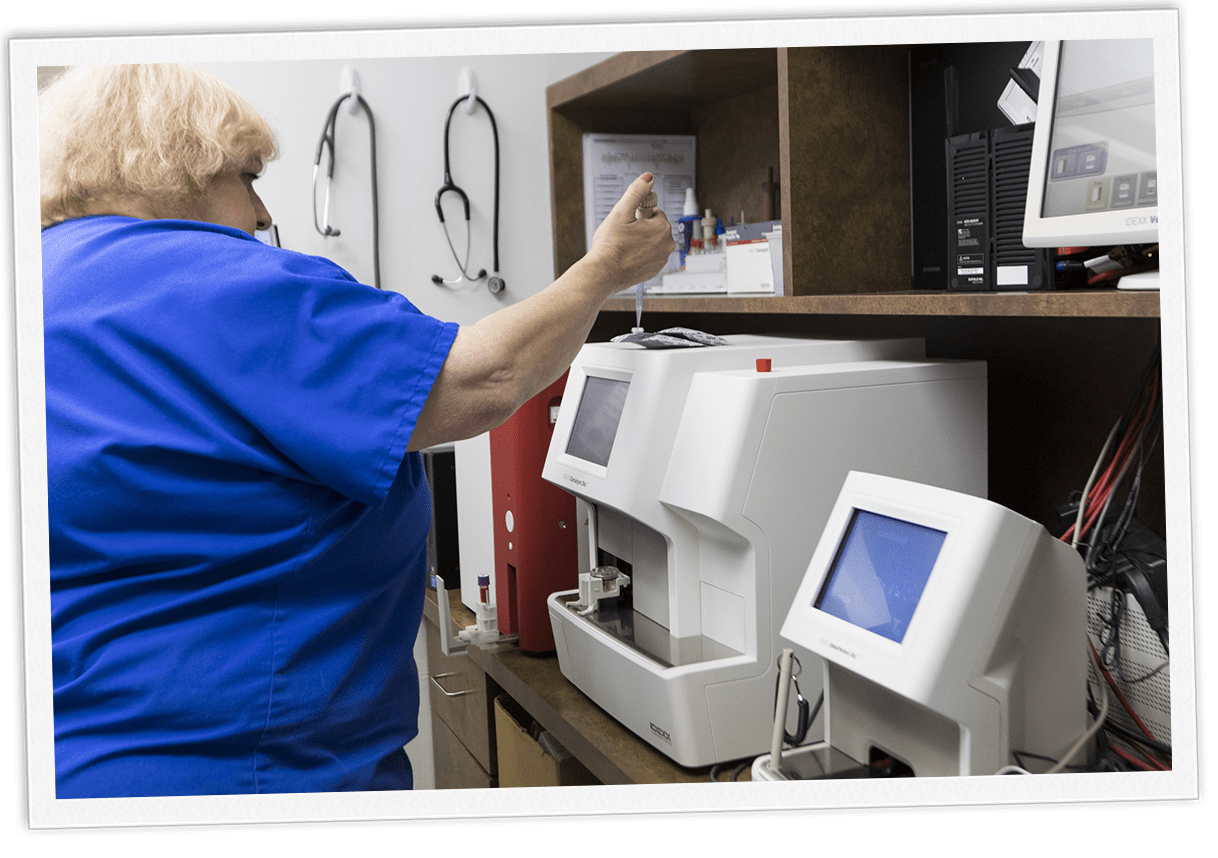 Complete In-house Laboratory
Complete In-house Laboratory
One of the most important aspects of any preventive medicine regimen is the ability to analyze how well your pet's internal organs and processes are functioning. For example, are the kidneys and liver doing their jobs at removing waste from the blood stream? Does your pet have internal parasites?
Laboratory testing allows us an opportunity to gain a view inside your pet's body in order to assess overall systemic health without the need for invasive and expensive procedures. This is why we maintain a full in-house laboratory at Sky Lake and we will regularly test your pet during wellness exams or when we suspect your pet may have a health issue.
Generally, we can have results within 15 minutes for the following tests: Fecal test, heartworm test, complete blood count, blood chemistry, blood clotting, microscopic examination of blood, electrolytes and urinalysis.
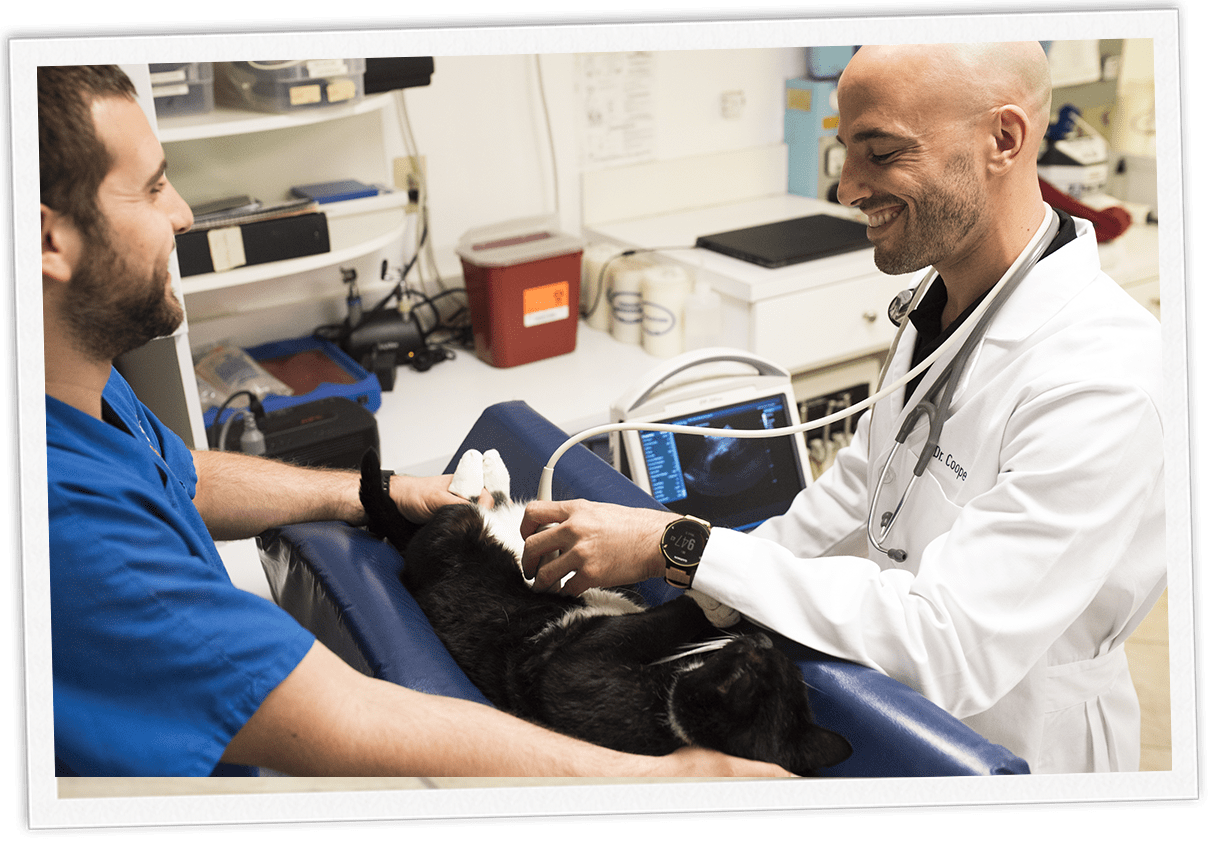 Ultrasound
Ultrasound
Ultrasound is an important diagnostic tool. We can look at your pet's internal organs, chest and abdomen without surgery or sedation. It is invaluable for making treatment decisions for various types of conditions. We perform in-house ultrasounds for cardiac, abdominal, guided cystocentesis and basic screenings.
In most cases, the procedure is relatively brief and your pet is able to go home the very same day. Most importantly, though, an ultrasound will help us make an accurate diagnosis of your pet's condition and provide effective treatment recommendations.
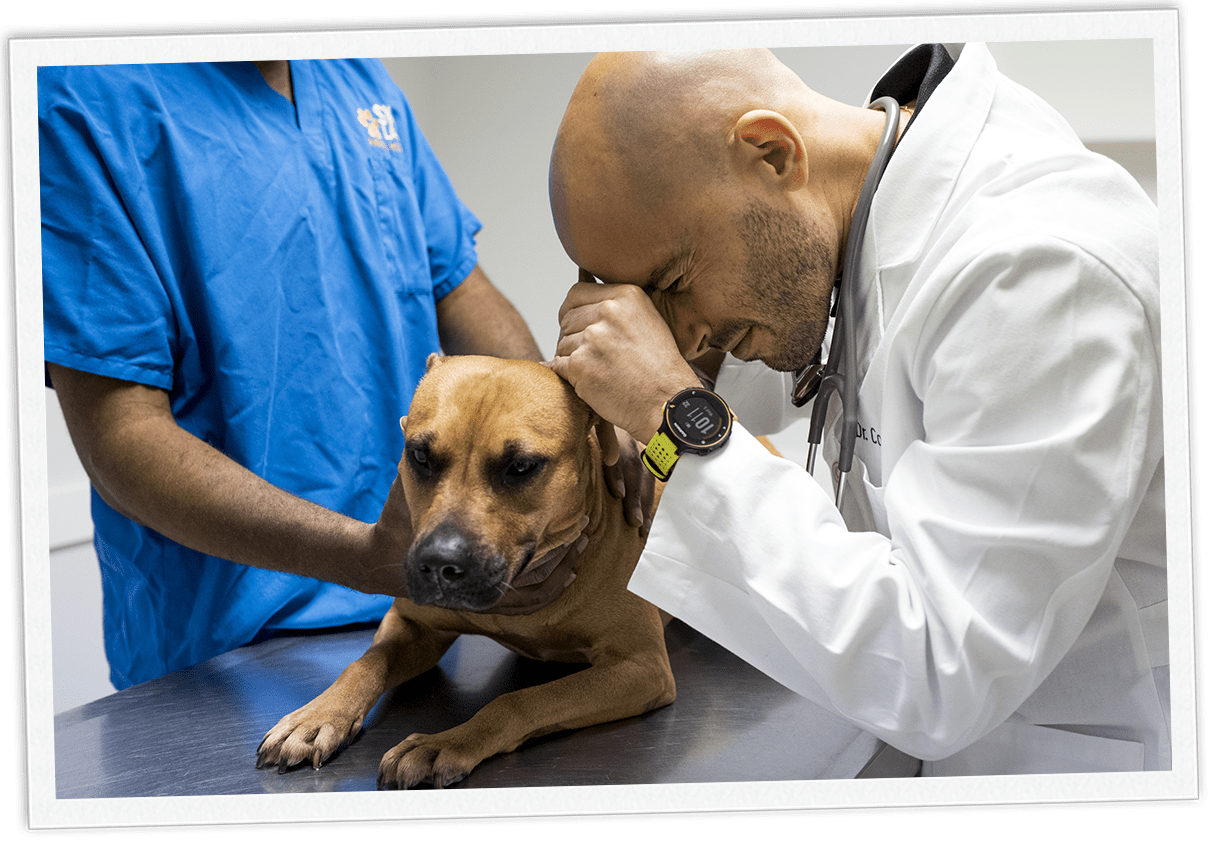 Video Otoscopy
Video Otoscopy
Chronic or recurrent otitis (ear infection) is a common and frustrating disease. A comprehensive approach to identifying and managing all predisposing factors, primary causes, and perpetuating features in each case is the key to successful therapy.
In pets with signs of otitis, video-otoscopy provides several important diagnostic and therapeutic advantages over traditional hand-held diagnostic and operating-head otoscopes. Moreover, video-otoscopy can aid in record keeping and client education.
Video-otoscopy offers superior optics and magnification to provide greater detail for evaluating the condition of the external canal and tympanic membrane. A video-otoscope's configuration of lens, light, and working channel allows us to introduce instruments into the ear without shadowing or blocking the visual field. Forceps, curettes, and catheters can be used to facilitate debris removal and sample collection.
Photographs and video recordings, other capabilities of video-otoscopes, provide a permanent visual record of the condition of a patient's external canal and tympanum. And a photograph can convey a patient's condition better than a verbal description when you re-evaluate a case, advise a client, or consult a colleague.
Electrocardiograms
ECG (electrocardiogram) is a test that measures the electrical activity of your pet's heart.
The electrical signals that make the heart's muscle fibres contract come from the sinoatrial node, which is the natural pacemaker of the heart.
During an ECG test, these electrical impulses are recorded and displayed on a printed readout.
This will help us diagnose any problems with the rhythm of your pet's heart, and provide an analysis of the conduction of the heartbeat to see if there is any underlying heart disease.
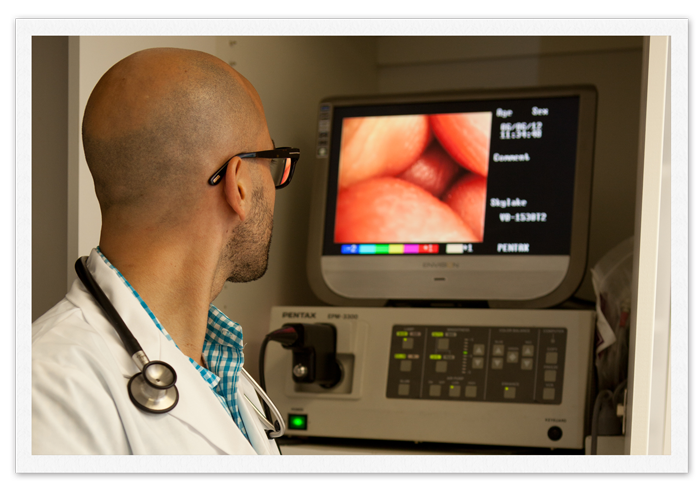 Endoscopy
Endoscopy
An endoscope is a long tube equipped with a lighted video camera on the end. Images from the camera are transmitted to a monitor and allows for an up-close view of your pet's internal organs, a view that might otherwise require invasive surgery.
At Sky Lake Animal Hospital, endoscopy is used for diagnosing and treating conditions in your pet's mouth, esophagus, stomach and intestine. An endoscope is often used to guide the removal of a foreign object, procure a biopsy sample or perform an exploratory procedure. Endoscopy is employed to obtain biopsies of the stomach and small intestine and look for cancer of the esophagus and stomach. Pets frequently swallow objects that can be removed as minor endoscopic procedures, rather than requiring traditional, expensive and complicated surgery.
Endoscopic procedures are far less invasive than routine surgeries; this means your pet experiences less pain and discomfort. Anesthesia is required for endoscopic procedures; however, the amount of anesthesia required is far less than what is needed for traditional surgeries, and your pet may be able to go home the same day. Endoscopy not only has advantages for your pet, it has advantages for you as well. Since your pet experiences less pain and recovers more quickly, he or she returns back to normal activity within a very short period of time. Less at-home nursing care is required, no bandages need to be changed and less medication needs to be administered.
We also offer bronchoscopies and rhinoscopies.
HOURS
Mon-Fri: 7:30AM-6:00PM
Saturday: 9:00AM-2:00PM
Sunday: Closed
